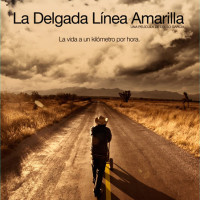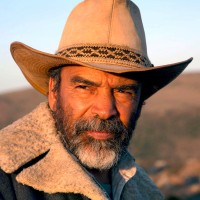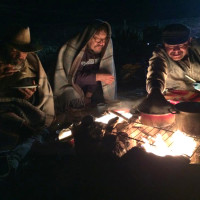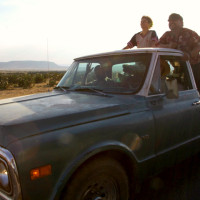
Celso García – Mexico’s Emerging Filmmaker
By Heidi Simmons
Filmmaker Celso García studied communication at Iteso University in Guadalajara, Mexico. That’s where García discovered how to convey visceral information through sound and images.
García made his first short film Up Without Wings (Arriba Sin Alas) in 1998 based on a Charles Bukowski story, which got the attention of filmmaker and fellow Guadalajaran, Guillermo del Toro.
“It was a short film contest and Guillermo was on the jury,” says García. “After he saw my film and read my profile, he told me how much he liked my work and asked I keep in touch.”
The opportunity to work with del Toro simmered with García. Time passed, and in 2004, García was invited to attend the Los Angeles premiere of del Toro’s Hellboy. There, del Toro approached García again and told García he wanted to produce his first feature film! With that possibility fresh in mind, García wanted to make sure he had something good.
“I felt a responsibility,” says García. “But I knew before I could do a feature film, I needed to make another very good short film.”
Which García did. His short film The Milk and the Water (La Leche y el Agua) premiered in 2006. It showed in 46 festivals winning 26 awards.
“It was very helpful to me,” says García. “In the time I took to make the film, it gave me confidence and more maturity.”
In 2008, ten years after his first film, García finally sent his new feature script The Thin Yellow Line (La Delgada Línea Amarilla, Mexico, 95 minutes) to del Toro. “He liked it,” says García. García takes his time writing his scripts with detail so there are no surprises and nothing is lost during filming. “It took me a while, but each story has its own time.”
The story is about five men and a dog who are forced to work together painting yellow traffic lines on a 200 kilometer stretch of rural Mexican highway. On their journey, they find the road of life is not so bad when you have trusted friends.
Filmed in the beautiful Mexican countryside of San Luis Potosi, the movie gradually and gently unfolds as the men learn to respect each other and themselves. It stars Damián Alcázar and Américo Hollander.
”This is a small, but honest film,” said García. “It was born with that in mind. It is about the intimacy between the men. It’s more important to know what’s happening to the characters on the inside than the outside.”
The Thin Yellow Line was shown to packed audiences at the PSIFF. “I love to sit and watch the film with the audience,” says García. “Each audience gives it a different energy.” He is hoping the film will find American theatrical distribution. “It’s made to be seen on a big screen.”
García’s film so far has earned five festival awards and three nominations including Best Latin American Film from Montreal’s World Film Festival. The film cost $2.5 million – a medium sized budget for Mexican films.
The government of Mexico provides filmmakers with 80 percent of the budget. The remaining 20 percent must be raised independently. García gave 30 percent of his pay toward post-production costs. He wanted to make sure the film was exactly as he envisioned.
Mexico is currently making 140 films a year, doubling the number from the previous year. But only 50 percent are distributed and make it to the big screen. “It is important to show the world this real Mexico,” says García. “I scouted locations for four months covering six Mexican states. I met incredible people. Mexico needs to see itself in a positive way.”
Director García and producer del Toro have a trusted and creative relationship and intend to continue to work together.
García has already begun his next screenplay. It tells the story of Mexican born Julia Pastrana, known as the “Bear Woman.” She was famous for being covered in hair, a condition called hypertrichosis.
“I like to make films that reflect who we really are,” says García. “I want to tell stories about our common humanity.”
















































